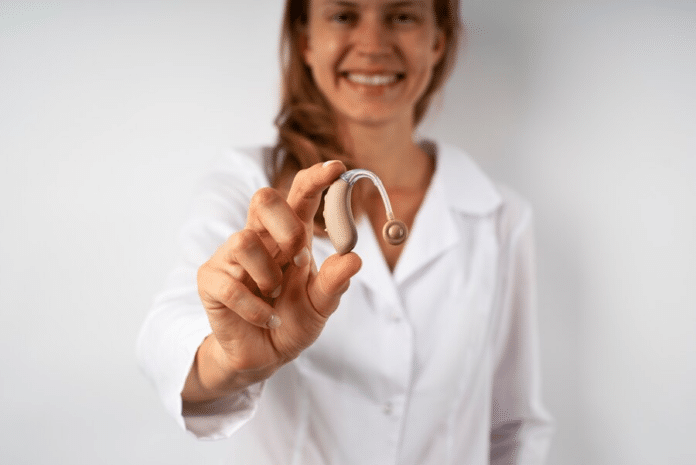
No offense to silent films, but the feeling of hearing loss can be akin to it – you feel detached and strain to understand what you’re seeing. Yes, sound is vital in how we interact with the world, and losing the ability to hear is like being transported into a Charlie Chaplin movie. Whether you’re experiencing hearing loss or helping a loved one or a friend through the situation, making an informed choice is vital in picking a device that enhances your hearing.
Here, we’ll share a few essential advice tidbits you should know so you can be confident with your choice.
Understand Your Type of Hearing Loss First
Hearing loss can’t be lumped into a single category – it varies according to type and severity. Knowing this first from your healthcare professional (an audiologist or an Ear Nose Throat (ENT) specialist) allows you to determine what kind of hearing aid is best for you. Your diagnosis can be one of the three main types:
- Conductive hearing loss – auditory impairment caused by blockages or damage in the outer or middle ear.
- Sensorineural hearing loss – the most common form of hearing impairment, which often emanates due to damage in the inner ear or auditory nerve.
- Mixed hearing loss – a combination of conductive and sensorineural loss, meaning the outer/middle ear and the inner ear have issues or damage.
The diagnosis of a medical expert helps build your confidence in your selection, as they will also recommend suitable hearing aids and their specifications.
Explore the Different Styles Available
Comfort comes second after knowing your hearing loss type. Before you buy hearing aids online or in-store, explore first how the device fits into your ear and if it can keep up with your lifestyle. If you’re the active or sporty type, Behind-the-ear (BTE) and In-the-ear (ITE) styles are your best options. BTE hearing aids sit behind the ear and connect to an earpiece inside the ear canal, while ITE hearing aids fit entirely inside the outer ear.
Both types are small and discreet, so doing exercises, workouts, or sports activities with them will cause little to no interference. Since you’ll be sweating a lot, be sure to pick water-resistant models. For busy individuals who value discreet and concealed devices, Receiver-in-canal (RIC), In-the-canal (ITC), and completely-in-canal (CIC) styles are perfect choices.
RIC hearing aids are smaller versions of BTE types, while ITC and CIC ones are smaller than ITE style. Their secure fit reduces the need for continuous adjustment, so users can do their activities as if the device is not there.
Choose Features That Matter Most
Aside from improving sound clarity and addressing hearing loss levels, there are other features of a hearing aid that users may want. The noise-reduction feature helps filter out background noise for better focus, while directional microphones improve hearing in noisy environments by focusing on the sound in front of you.
Rechargeable batteries offer convenience compared to regular battery replacements. Bluetooth connectivity can help you enjoy your favorite TV shows and series by streaming audio from smartphones, TVs, and other devices. Think about how these features can benefit you today and in the future.
Get Your Budget in Order
Buying a hearing aid doesn’t culminate in you making your choice and paying for it. Ending with a successful purchase depends on how the prices vary according to brand, model, and included features. Sound quality comes first, while other features come second, so pick high-end and durable devices if the budget allows, but if not, go for affordable options with excellent sound quality.
Check if your insurance plan has coverage of your hearing aid cost and consider the purchase price, costs for accessories, maintenance, and future upgrades.
Image Source: Freepik
Hearing aids can restore your connection with people and your surroundings, but only if they are the right kind and fit. Don’t take the process of choosing the first hearing aid lightly, as it will be your long-term sidekick in hearing the cacophony of the world. Understand your unique hearing needs, explore different types, ensure a comfortable fit, and assess technology features to guide you through the initial stages of selecting your first pair of hearing aids.
Your diligent research will reward you with a trusty device that helps you reconnect with the moments that matter most.
Main Image> Freepik




